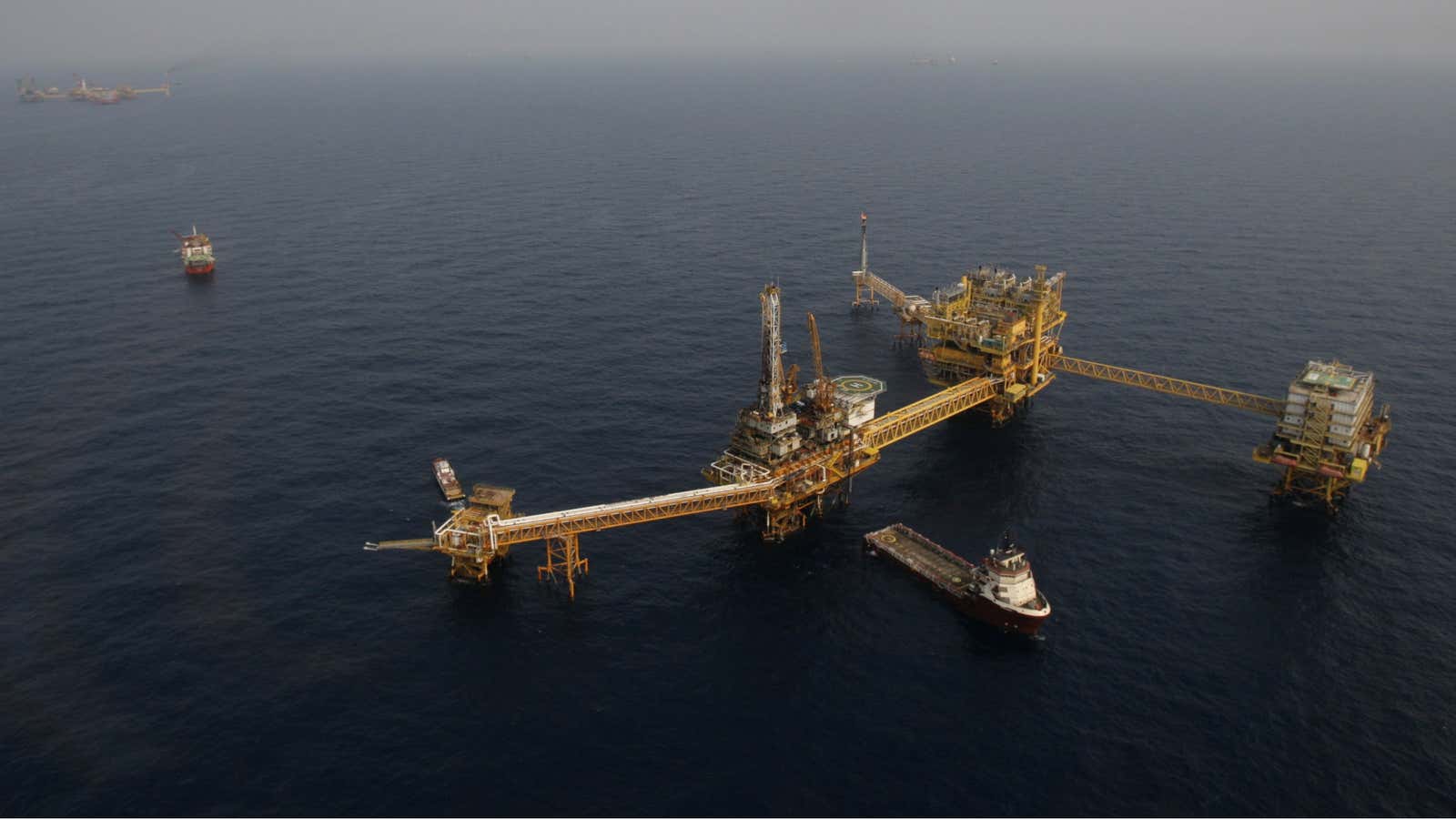Mexico wants to break out of a nine-year petroleum production slump and join the lucrative oil party under way in the US and Canada. To do so, the country’s laggard, state-owned oil company has finally announced the fields that it’s prepared to relinquish to more proficient foreign oil companies, which for the first time in three-quarters of a century will be permitted to drill in Mexican waters.
Pemex’s wish list is unsurprising in its brazen self-interest: It has asked the Ministry of Energy for rights to retain control of more than 83% of the country’s proven and probable oil reserves. Still, under the 68-page document (paywall) that Pemex submitted March 21, foreign oil companies would still have some 4.2 billion barrels of proven and probable reserves to pick over.
That’s undeniably a large volume of oil, but there are still a lot of unanswered questions. How much of Pemex’s wish list will be approved? How many of those 4.2 billion barrels are concentrated in one place, making them more lucrative to extract? What kind of profit-sharing deals will the ministry offer? And, finally, to what degree will Pemex invite foreign players as drilling partners for the other 20 billion barrels of proven and probable reserves—the fields that it has attempted to claim for itself?
The Mexican Energy Ministry has until September to review Pemex’s wish list and announce the fields that will be up for grabs in five annual bidding rounds from 2015 through 2019, with each round covering 20,000 square kilometers.
The stakes are high for everyone. Pemex revenues finance a third of Mexico’s budget, but those proceeds have been falling. Pemex oil production has dropped for nine straight years, from a peak of 3.4 million barrels a day in 2004 to an average of 2.5 million barrels a day last year. And the company has lost money for five straight quarters, including $5.8 billion in the fourth quarter last year.
Meanwhile, Pemex is seeking to ramp up to 4 million barrels a day of production by 2025, but the company has barely managed to start drilling the offshore and shale fields with the most new potential. On the US side of the Gulf of Mexico, for instance, hundreds of wells produce some 1.3 million barrels of oil a day. In Mexican Gulf waters, Pemex is producing exactly none. On the Texas side of the Eagle Ford shale field, permits have been issued for some 13,000 wells. In Mexico, Pemex has drilled about 175 shale wells.
As for the foreign companies, many are eager to drill in Mexico given the relative political instability in the rest of the world. There are the economics of critical mass—majors such as BP, Chevron and ExxonMobil that are already active in the Gulf of Mexico can use the same expertise and knowledge in Mexican waters. Along with smaller players, they have mastered the drilling techniques of hydraulic fracturing in the Eagle Ford shale, and hope to move across the border and ply the same skills in Mexican shale.
There are already some indications of how the ministry will decide. Lourdes Melgar, deputy minister for hydrocarbons, told reporters this week that, in addition to boosting oil production and profits, the government’s aim is to retain “a strong Pemex. A vision that aims to shrink Pemex would be very negative and is not an option.”
In that vein, Pemex looks likely to be given approximately 15% of the shale fields, as it requested. It will also probably keep all the country’s shallow-water oilfields, which have been under development for decades.
The most sought-after deep-water play—the Perdido Fold Belt, which straddles US-Mexico waters in the Gulf—looks likely to be split between Pemex and foreign companies. Pemex believes that some 30 billion barrels of oil reserves underlie Mexico’s section.
In addition, according to Pemex CEO Emilio Lozoya, the state-owned company will not go it alone in the parts of Perdido that it is allocated, but will instead seek foreign partners with deep-water experience. To the degree the pie is shared, the party could indeed spread south.




